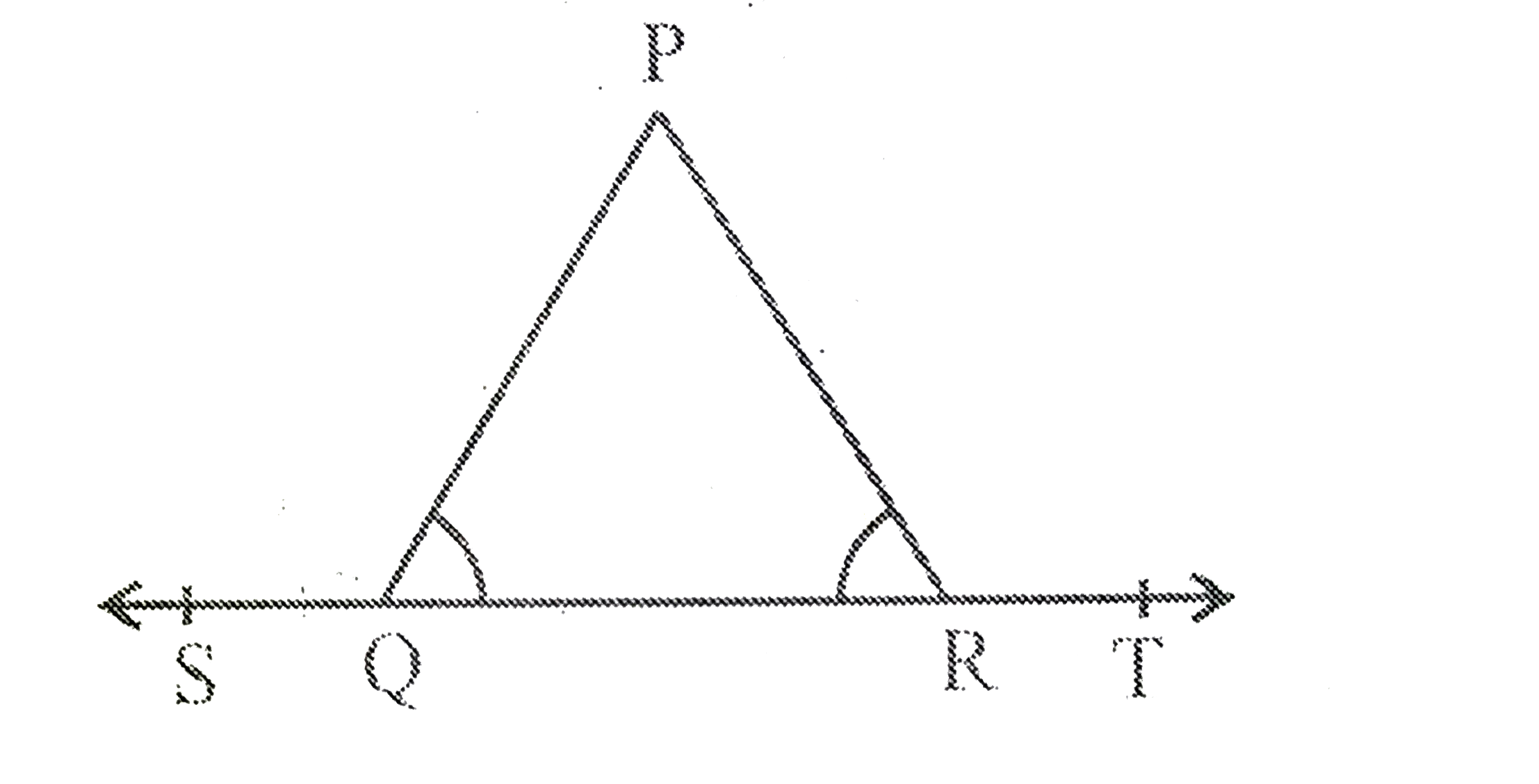In Fig. if PQ∣∣BC and PR∣∣CD . Prove that (i) ARAD=AQAB (ii) QBAQ=DRAR .
To solve the given problem, we will use the Basic Proportionality Theorem (also known as Thales' theorem). This theorem states that if a line is drawn parallel to one side of a triangle, it divides the other two sides proportionally.
1. Consider Triangle ABC:
- Since PQ∥BC, by the Basic Proportionality Theorem, we have:
AQAB=APAC(1)
2. Consider Triangle ACD:
- Since PR∥CD, again by the Basic Proportionality Theorem, we have:
ARAD=APAC(2)
3. Equating (1) and (2):
- From equations (1) and (2), we can equate:
AQAB=ARAD
- Hence, we have proved that:
ARAD=AQAB
Proof of (ii) QBAQ=DRAR:
1. Using the results from (i):
- From the first part, we know:
AQAB=ARAD
- Taking the reciprocal gives:
ABAQ=ADAR(3)
2. Expressing AB and AD:
- We can express AB as AQ+QB and AD as AR+DR:
AQ+QBAQ=AR+DRAR
3. Simplifying the equation:
- This simplifies to:
1+QBAQ=1+DRAR
- By subtracting 1 from both sides, we get:
QBAQ=DRAR
Conclusion:
Thus, we have proved both parts:
1. ARAD=AQAB
2. QBAQ=DRAR
- Since PQ∥BC, by the Basic Proportionality Theorem, we have:
AQAB=APAC(1)
- Since PR∥CD, again by the Basic Proportionality Theorem, we have:
ARAD=APAC(2)
- From equations (1) and (2), we can equate:
AQAB=ARAD
- Hence, we have proved that:
ARAD=AQAB
- From the first part, we know:
AQAB=ARAD
- Taking the reciprocal gives:
ABAQ=ADAR(3)
- We can express AB as AQ+QB and AD as AR+DR:
AQ+QBAQ=AR+DRAR
- This simplifies to:
1+QBAQ=1+DRAR
- By subtracting 1 from both sides, we get:
QBAQ=DRAR
Thus, we have proved both parts:
1. ARAD=AQAB
2. QBAQ=DRAR
Topper's Solved these Questions
Similar Questions
In Figure PQ∣∣CD and PR∣∣CB.ProveAQQD=ARRB.
View SolutionIn Figure, AP||BQ ||CR. Prove that ar (AQC)= ar (PBR)
View SolutionIn Fig. 6.15, ∠PQR=∠PRQ, then prove that ∠PQS=∠PRT.

View SolutionIn figure Cm and RN are respectively the medians of ΔABCand ΔPQR. If ΔABC~ΔPQR, prove that: (i) ΔAMC~ΔPNR (ii) CMRN=ABPQ (ii) ΔCMB~ΔRNQ
View SolutionIn figure, PSDA is a parallelogram in which PQ=QR=RS and AP||BQ||CR∣∣DS. Prove that ar (△ PQE)= ar (△ CFD).
View SolutionIn Figure, PQ||AB and PR ||BC . If ∠QPR=1020 , determine ∠ABC. Give reasons.
View SolutionThe sums of first p, q, r terms of an A.P. are a, b, c respectively. Prove that
ap(q−r)+bq(r−p)+cr(p−q)=0
View SolutionP is the mid-point of side AB of a parallelogram ABCD . A line through B parallel to PD meets DC at Q and AD produced at R. Prove that:
(i) AR=2BC
(ii) BR=2 BQ
View SolutionIn Figure, PS=QR and ∠SPQ=∠RQP. Prove that PQS ≅ QPR, PR=QS and ∠QPR= ∠PQS
View SolutionIn ABC,D is the mid-point of AB,P is any point of BC,CQ∣∣PD meets AB in Q . Show that ar(BPQ)=12ar(ABC). TO PROVE : ar(BPQ)=12ar(ABC) CONSTRUCTION : Join CD.
View Solution
